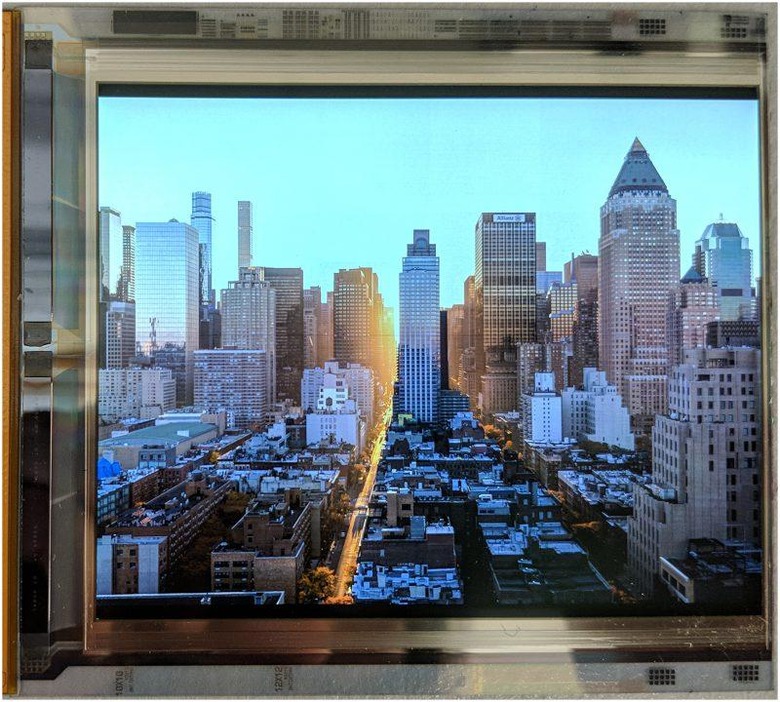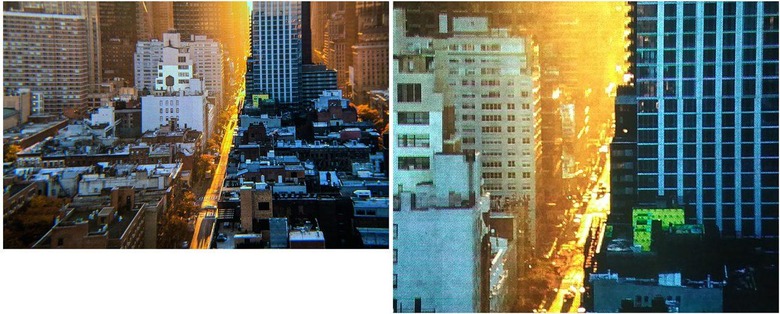Google And LG Just Built The Key To Lifelike VR
Mobile VR is about to get a big kick in the rear end from Google and LG. They've created a 4.3-inch display that packs in 1,443 pixels per inch with OLED technology. This display also rolls with 120 Hz refresh rate, so you know it's going to deliver super-smooth, super-realistic graphics for the foreseeable future. Until our eyes get better at discerning reality, that is.
The OLED display LG and Google worked on is three times as pixel-dense as the displays embedded in the first-gen Oculus Rift and HTC VIVE. It's what they call the "world's highest resolution OLED on glass display panel." That's impressive on its own – but what it'll be made for, that's the real kicker.
"The design uses a white OLED with color filter structure for high density pixelization and an n‐type LTPS backplane for faster response time than mobile phone displays," said Carlin Vieri et. all in a research paper published this week. "A custom high bandwidth driver IC was fabricated. We developed a foveated pixel pipeline appropriate for virtual reality and augmented reality applications, especially mobile systems."
Whether you've experienced VR or AI, whether you plan on it or not, we've gotten to a point where both VR and AI are driving innovation. People are investing massive amounts of time and energy in this universe, and it's not going away any time soon.
In this case, the objective is to make a head-mounted display (HMD) with a visual experience that "matches the HVS as closely as possible." HVS is Human Visual System, and it's reality as we perceive it. If you're a human, that is. If you're a robot reading this, things are a little different for you. You're fooled a lot more easily than human eyes in some cases, and not nearly so easily in other cases.

The image you see above shows a 4.3-inch OLED as cited by the study published this week by Google and LG. It really doesn't do the subject matter justice since we're left to look at it through our own displays. That's like judging sound quality of a pair of speakers playing in a video on YouTube – it doesn't work like that.

However – zooming in a bit on the picture presented by the OLED allows us to get a better idea of how sharp said display is. It's so sharp, human eyes won't be able to discern pixel from pixel. Not without additional instrumentation, that is.
This display also rolls with 150 cd/m2 @ 20% duty brightness, >15,000:1 contrast, and 10-bit color depth. If we see this display used in a VR headset, mobile VR headset, or anything along said lines, it'll push the whole market forward in a major way – like generational gap, style.
According to 9to5Google, Google will reveal the final display at Display Week 2018. Cross your fingers they hide Waldo in their display image this time – hide him in a pixel!
For more information on the design of this display panel, see the research paper "An 18 megapixel 4.3″ 1443 ppi 120 Hz OLED display for wide field of view high acuity head mounted displays." This paper was published in Wiley Online Library with Journal of the Society for Information Display. This paper was authored by Carlin Vieri, Grace Lee, Nikhil Balram, Sang Hoon Jung, Joon Young Yang, Soo Young Yoon, and In Byeong Kang. This paper was first published on the 9th of May, 2018, and can be found with code doi.org/10.1002/jsid.658 (URL).
